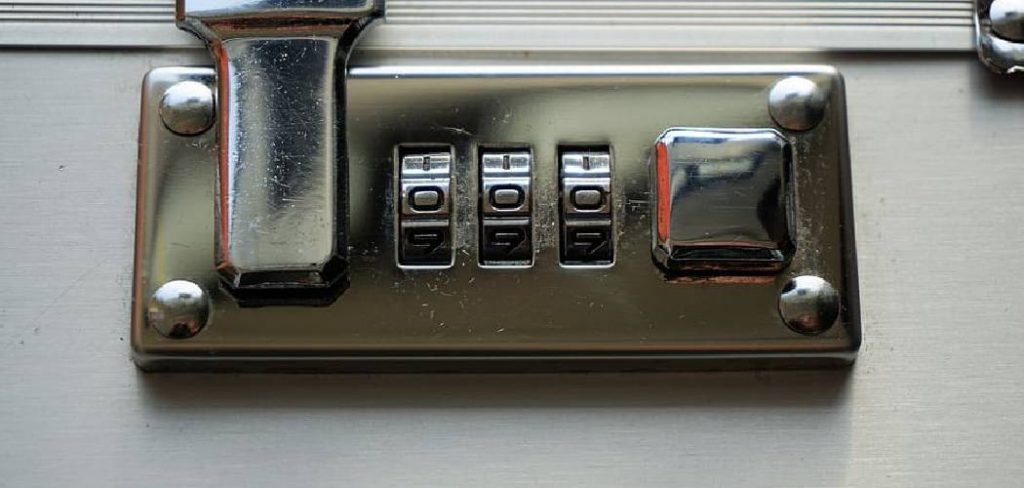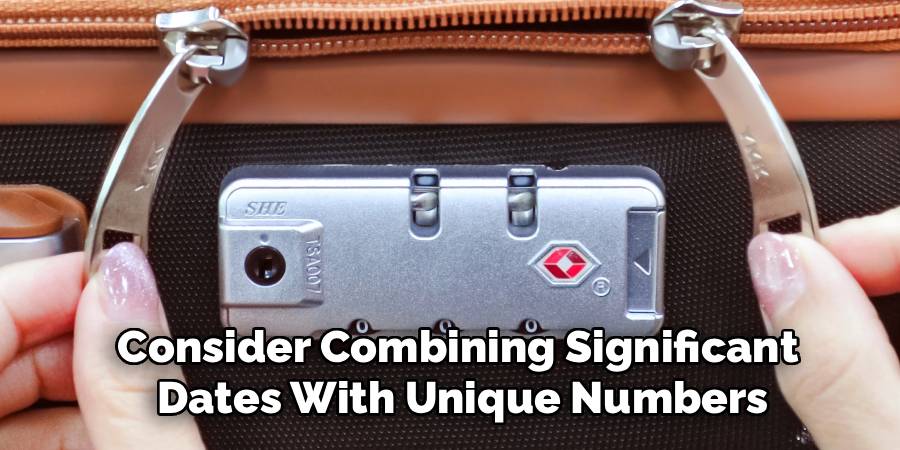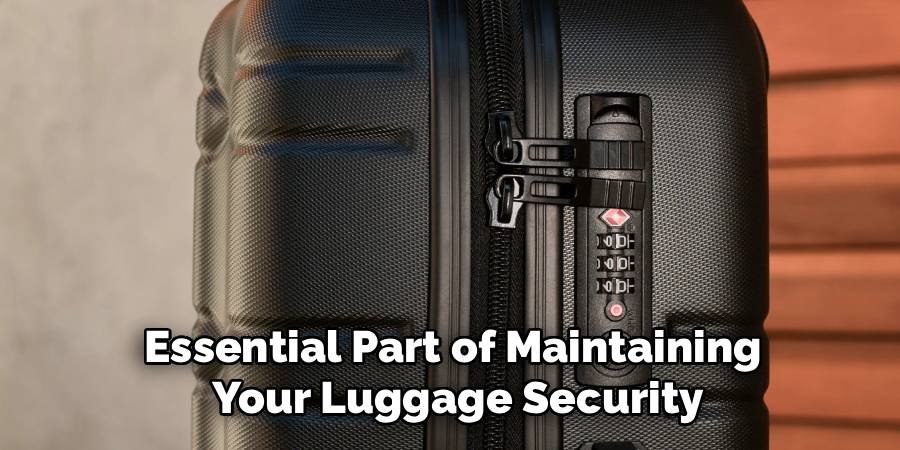Luggage security is a top concern for travelers, whether you’re embarking on a business trip, family vacation, or an international adventure. Among the most trusted tools for safeguarding your belongings is the TSA-approved lock—a device designed not only to keep your valuables safe but also to ensure that airport security officials can access your luggage when necessary without damaging your lock or suitcase.

Understanding how to set a TSA lock properly provides peace of mind and helps prevent travel mishaps due to forgotten codes or malfunctioning mechanisms. In this comprehensive guide, we’ll walk you through everything you need to know about TSA locks, from understanding their features and choosing the right type to step-by-step setup instructions, maintenance tips, and troubleshooting. By the end, you’ll have the confidence and practical know-how to secure your bags efficiently and travel worry-free.
Understanding TSA Locks
What is a TSA Lock?
A TSA lock is a special type of padlock or suitcase lock that can be opened by Transportation Security Administration (TSA) agents using master keys. These locks are designed specifically for travel, allowing security personnel to inspect your bags without destroying your lock or luggage. TSA locks are popular with travelers worldwide because they offer a reliable balance of security and accessibility. They’re used by anyone flying through airports—especially in the United States—where bag inspections are common.
The Importance of TSA Approval
TSA-approved locks are marked with a distinctive red Travel Sentry logo. This emblem signals to TSA agents that your lock can be opened with special master keys, reducing the chance that locks will be cut off during routine screenings. Using a TSA-approved lock benefits both domestic and international travelers by providing reasonable protection for their belongings while complying with airport and border security standards. It’s especially advantageous for international trips, where regulations may vary, but TSA approval generally indicates a lock’s compatibility with many official baggage handling systems.
Types of TSA Locks
Combination, Keyed, and Smart/Biometric Options
TSA locks come in a variety of designs to suit different needs and preferences. The most popular types are combination locks, keyed locks, and increasingly, smart or biometric models. Combination locks allow you to set and enter a numeric code to unlock your luggage, making keys unnecessary and reducing the risk of misplaced or lost keys.

Keyed locks, by contrast, use a physical key for access, which some users prefer for simplicity but can present issues if the key is lost or stolen. Smart or biometric TSA locks are recent innovations that use electronic codes, fingerprints, or even mobile phone connections, offering heightened convenience and additional security features, but may require batteries or charging.
Each type of TSA lock comes with its pros and cons. Combination locks are popular for their simplicity and reliability, but require a memorable code, while keyed versions avoid code-related mishaps but risk a lost key. Smart locks add a modern touch and enhanced tracking or logging capabilities, but may be less practical in environments without power or Wi-Fi. Travelers should weigh these options based on their destination, frequency of travel, and personal preferences.
Preparing to Set Your TSA Lock
What You Need to Begin
Before you begin, gather your TSA lock, the instruction manual, and set aside a quiet space free of distractions. Reading the manufacturer’s instructions specific to your lock model is crucial, as each product may have unique features or setup routines even if the general process is similar. Most modern locks are designed for user-friendly adjustment, but familiarity with your particular model is the first step toward successful setup.
Choosing a Secure Combination
Selecting a secure code is critical. While it’s tempting to use easy combinations like 000 or 123, these codes are best avoided; instead, create a code that’s personally memorable but not obvious to others. Consider combining significant dates with unique numbers or patterns that only you would know. Write your combination down in a secure, private place, such as a password manager or a notebook kept at home—never attached to your luggage or easily accessible during travel.

How to Set a TSA Lock: Step-by-Step Instructions
Setting a TSA lock may seem intimidating at first, but with a methodical approach, it’s a straightforward process that can be completed in just a few minutes. The following steps offer a general approach, but always consult your lock’s specific guide for updates or unique mechanisms.
Step 1: Locate the Default Setting
Most TSA locks are preset with a default combination—commonly 0-0-0 or 1-2-3. Locate this default code on your lock. If the lock is new, it should open using the default setting. If you’re unsure, check the packaging or instruction sheet that came with your lock. Entering this code should allow you to open the lock and begin adjusting the settings.
Step 2: Activate Reset Mode
Depending on your TSA lock’s design, you’ll need to engage a reset mode. This may involve pressing a reset button, toggling a lever, or using a small tool included with your lock. For dials, you might have to turn the shackle 90 or 180 degrees, push down, then hold while inputting your new code. On some models, there’s a tiny button on the interior of the locking mechanism or beside the dials. For keyed TSA locks with combination features, you may need to insert the key and follow special reset steps. Take time to read the instructions for your specific model.
Step 3: Enter and Confirm Your New Combination
Turn the dials slowly and with care to set your chosen combination. Ensure each digit is aligned squarely, as imprecise settings can cause the lock to jam or fail to open correctly. Once the new code is entered, release the reset button or return the lock mechanism to its standard position by re-inserting the shackle or moving the lever back. Test your new combination at least two or three times before using the lock on your luggage to be certain it unlocks smoothly every time.

Step 4: Troubleshooting Common Issues
From time to time, travelers encounter difficulties while setting their TSA lock. If your lock won’t reset or dials become stuck, don’t force any components. Double-check that you followed the reset instructions exactly, and ensure all buttons or levers are properly engaged. If your lock remains stuck, consult the troubleshooting section of your user manual or the manufacturer’s website for support. Some companies offer video tutorials or customer service advice for stubborn issues. It’s always better to resolve problems before your trip to avoid last-minute stress at the airport.
Maintaining Your TSA Lock
Cleaning and Upkeep
Routine maintenance helps keep your TSA lock working reliably through many trips. Periodically wipe the lock’s surface with a damp cloth to remove dust, grime, or residue that can build up. Use a small brush for cleaning around dials, shackles, and any crevices where dirt might settle. Occasionally, add a tiny drop of lubricant (like graphite or a specialty lock fluid) to the moving parts, turning the dials or operating the mechanism to distribute it evenly. Avoid using heavy oils that might collect dust.
When to Change Your Combination
It’s wise to change your lock’s combination every few trips, especially if you believe someone may have learned your code or if the lock has been opened during an inspection. Create a new combination using the same secure selection principles. Even if you haven’t noticed tampering, updating your code periodically keeps your belongings safer and ensures continued peace of mind.
What to Do If You Forget Your TSA Lock Combination
Even the most organized travelers can occasionally forget a lock code. If this happens, first check any records where you may have written the code. If you’ve tossed the packaging or can’t find your notes, try cycling slowly through every possible combination, focusing on patterns you might use. For more complex locks, this can be time-consuming.
Some manufacturers provide reset procedures for forgotten codes, often requiring proof of purchase or a serial number. Check the lock’s brand website for documentation or reach out to their customer service. While not all TSA locks can be reset by users, many companies have processes to assist in case of lost combinations. As a last resort, you may need to seek help from a locksmith or consider replacing the lock altogether.
Travel Tips for Using TSA Locks
Best Practices for Frequent Travelers
If you travel often, get in the habit of double-checking your TSA lock before each journey. Make sure the lock functions correctly and that the code is still memorable. Before departure, securely record your current combination using a format or tool that works for you—such as a password manager app, a coded entry in your phone, or a physical logbook kept away from your bags.
Security Considerations
Be wary of using easy-to-guess codes or sharing your combination freely, even if you trust your travel companions. Only provide your code if necessary, and change it afterwards if the information was disclosed. Keeping your lock’s combination private is an essential part of maintaining your luggage security.

Conclusion
Travel should be an exciting experience, not overshadowed by unnecessary worry about the security of your belongings. That’s why mastering how to set a TSA lock matters: it empowers you to travel with confidence, knowing your luggage is both protected and compliant with airport regulations. Setting your lock up properly lays the foundation for a stress-free journey, while regular maintenance and prudent code management keep your belongings safe trip after trip. Follow the guidance in this article to make sure your bags are always secure—and enjoy the freedom of exploring the world with peace of mind.
About
Safety Fic is a distinguished figure in the world of Diy design, with a decade of expertise creating innovative and sustainable Diy solutions. His professional focus lies in merging traditional craftsmanship with modern manufacturing techniques, fostering designs that are both practical and environmentally conscious. As the author of diy, Safety Fic delves into the art and science of Safety Fic-making, inspiring artisans and industry professionals alike.
Education RMIT University
(Melbourne, Australia) Associate Degree in Design (Safety Fic) Focus on sustainable design, industry-driven projects, and practical craftsmanship. Gained hands-on experience with traditional and digital manufacturing tools, such as CAD and CNC software.
Nottingham Trent University
(United Kingdom) Bachelor’s in diyfastly.com and Product Design (Honors) Specialized in product design with a focus on blending creativity with production techniques. Participated in industry projects, working with companies like John Lewis and Vitsoe to gain real-world insights.
Publications and Impact
In diy, Safety Fic his insights on indoor design processes, materials, and strategies for efficient production. His writing bridges the gap between artisan knowledge and modern industry needs, making it a must-read for both budding designers and seasoned professionals.
